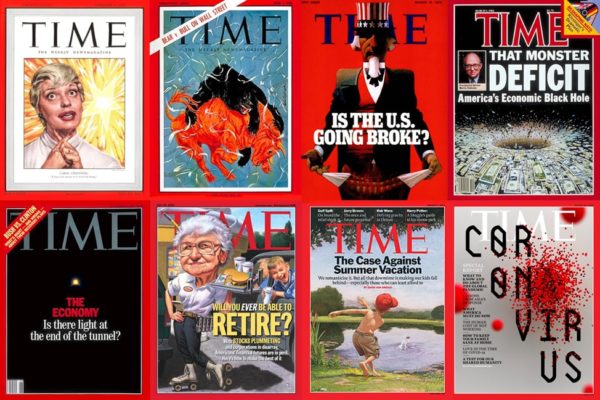It stands to reason that the more money you make, the easier it is to save for retirement. Yet my clients are often surprised when I tell them that planning for a successful future has little to do with how much money you earn and everything to do with how much you spend.
If you follow Tony Robbins, you likely know the story of the UPS worker who never made more than $14,000 per year but retired with a net worth of $70 million. Meanwhile, a recent Lending Club report revealed that 36% of Americans who earn at least $250,000 annually say they live paycheck to paycheck.
How is it that someone with a modest salary can retire far more comfortably than someone who earns six figures? I’m sure there are many factors that can explain this discrepancy. However, in my experience, lifestyle inflation is frequently to blame. Fortunately, once you’re aware of it, you can keep lifestyle inflation in check, so it doesn’t prevent you from reaching your retirement goals.
What Is Lifestyle Inflation?
Lifestyle inflation—also called lifestyle creep—is the tendency to increase your spending as your income rises. To illustrate this concept, let’s walk through an example.
If you’re like most of us, you probably made very little at your first “real” job after college. Nevertheless, you did whatever was necessary to make ends meet—whether that meant taking on a roommate (or roommates), eating ramen noodles for dinner every night, or staying home on weekends instead of going out.
Naturally, as your salary increased, you loosened your belt a bit. Maybe you got your own apartment, started buying nicer clothes, or began treating yourself to take-out a few nights a week. We’ve all done it.
Indeed, it’s completely normal to increase your spending until your lifestyle reaches a comfortable level. However, many people keep spending as their earnings increase—even when they don’t need the extra income to survive. This is when lifestyle inflation can become problematic and potentially keep you from achieving your long-term financial goals.
How to Keep Lifestyle inflation from Derailing Your Retirement Plans
In many cases, people overspend simply because they don’t know what to do with their extra cash. The good news is with a little self-awareness and careful planning, you don’t have to fall into this trap.
Strategy #1: Automatically Step Up Your Savings
If you’re already contributing regularly to your emergency fund and retirement savings, well done. This is a great first step towards securing your financial future. However, as your income increases, be sure to step up your savings, too.
One way to put this strategy on autopilot is to transfer a percentage of your monthly income rather than a fixed dollar amount to savings. For example, instead of contributing $1,000 a month to your retirement plan, consider contributing 15% of your pre-tax income.
That way you don’t have to consciously increase your contributions every time you get a raise. Because let’s be honest, most of us will find something else to do with that money before moving it into savings. Automatically stepping up your savings can help you overcome the natural tendency towards lifestyle inflation.
Furthermore, this strategy isn’t limited to your retirement savings. As your income grows, consider building your cash reserves as well. An easy guideline to follow is saving three to six months of your take-home pay for emergencies and unexpected financial setbacks.
Once you come up with a target savings rate, set up automatic transfers from your primary checking or savings account to your designated cash account. In other words, keep your emergency savings out of sight (and out of mind), so you’re not tempted to spend it.
Strategy #2: Prioritize Your Financial Goals
At this point you may be wondering what happens when you max out your retirement savings. Should you put all your extra income in your emergency fund? Not necessarily.
Even if you don’t have a formal financial plan, you likely have a variety of financial goals. For example, beyond saving for retirement, you may want to pay for your children’s college education, pay off your mortgage, or buy a vacation home.
Prioritizing your financial goals can help you keep lifestyle inflation in check. Indeed, going through this process can help you allocate your next dollars after paying down high-interest debt, building your cash reserves, and maxing out your retirement plan contributions. That way, you know exactly where to direct your extra cash each month so you’re not unintentionally overspending.
Strategy #3: Practice Spending More Intentionally
I tend to stress self-awareness over perfection when advising my clients on their personal finances. But if you’re making a decent amount of money, tracking every dollar you spend probably seems less important than it did when you were making far less.
Few people enjoy budgeting. And even if you have a budget, you may not be following it closely. That’s okay. However, being more aware of where your money goes each month can help you avoid unintentional lifestyle inflation.
To get started, pull your credit card and bank statements from the last few months to see where your money is coming from and where it’s going. From there, you can look for opportunities to spend less, negotiate better prices, or eliminate spending altogether.
You may find that many of the things you’re spending money on aren’t improving your quality of life at all. To borrow a phrase from Marie Kondo, if your discretionary spending doesn’t “spark joy,” consider directing those dollars somewhere more productive.
Strategy #4: Consider Working with A Financial Advisor You Can Trust
Lastly, one of the most effective ways to keep lifestyle inflation from derailing your retirement plans is to have someone you trust hold you accountable. A financial advisor can help you keep your spending in check while staying on track towards your financial goals. In addition, having an accountability partner can help take the guesswork out of many complex financial decisions that arise as your income and net worth increase.
One final note about lifestyle inflation. Don’t let this guide make you think you can’t enjoy your hard-earned money. At the end of the day, your money is meant to facilitate the things and experiences in life that do bring you joy. Though it’s important to make sound financial decisions for your future, be sure to enjoy yourself along the way.
At Align Financial, our mission is to help clients align their money with their life. If we can help you develop a financial plan that reflects your values and goals, please get in touch. We’d love to hear from you.













